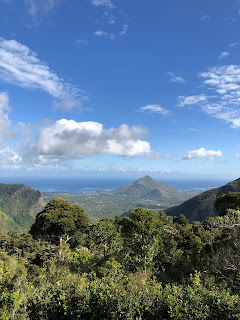Birding in the Digital Age
On the 1st of July, a Fea's-type Petrel was spotted flying north past Flamborough Head prior to 10am. What ensued was one of the best examples of birding cooperation that I have ever seen. By quickly sharing the news and communicating online, the bird was seen at a further 13 coastal sites in the north east of the country, 13 more opportunities for photographs and corroboration. Thanks to better photographs further up the coast (and great online collaboration after the photos were shared) the bird was identified as a Soft-plumaged Petrel - a first for Britain, subject to acceptance. This is both a fantastic record and display of the power of digital communication. This bird would surely never have been identified let alone accepted had it not been for technological advancements.
You might wonder, with 626 species now on the British list, when will it stop increasing? I would argue not any time soon, thanks at least in part to our ever-improving technology.
I think new seabird additions in particular will start coming thick and fast. We know seabirds travel extraordinary distances, and some of the recent additions such as White-chinned Petrel seem to show that any pelagic seabird might be possible - in contrast, we know that realistically lots of passerines will never reach our shores unassisted. Yet it's also only relatively recently that our technology has improved enough (cameras, new services etc.) to gather the evidence required to prove seabird records which seem, on the surface at least, unbelievable. Not too long ago getting a bird like this accepted would have been dependent on reputation and brilliant field notes - usually one observer, and usually no photo.
Who knows how far cameras will progress in the future too. When I purchased my Nikon Coolpix P900 last year, I was astonished by the quality I could get from a distant record shot, even with this relatively cheap piece of equipment.
I did some research and have compiled a thought-provoking non-exhaustive list of seabirds that have been historically claimed in British waters but never proven:
Great-winged Petrel, Trindade Petrel, Atlantic Petrel, Red-legged Kittiwake, Parakeet Auklet, South American Tern, Antarctic Tern, Cape Verde Shearwater, Bulwer's Petrel, Audubon's Shearwater, Brown Noddy, Cape Gannet, Great Frigatebird, Grey-headed Albatross, Townsend's Shearwater, White-faced Petrel, White-cheeked Tern, Masked Booby, Short-tailed Shearwater


Very enjoyable read, Matt. The impact of technology on birding generally has fascinated me for some years, particularly digital comms and camera use. Since I've got into nocmig, that's been another obvious sphere that's ripe for discovery too. What next? Thermal imaging technology perhaps?
ReplyDeleteGreat stuff. 😊 👍
Thanks Gavin, I really appreciate it. It’s a really interesting prospect isn’t it! Agreed I think thermal imaging will become very popular. Maybe more artificial intelligence like the Merlin App too?
Delete